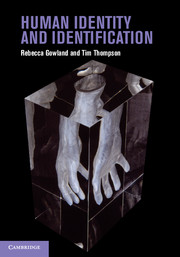1 - Introduction
Published online by Cambridge University Press: 05 February 2013
Summary
The body is not a beginning. It is not a starting point.
(Cream, 1994: 2)Introduction and some historical context
Study of the physical body has a long history, with the first recorded anatomical dissections performed in Alexandria during the third century BC (Sawday, 1995; Carlino, 1999). Anatomical knowledge of the human body in the Western world was then further expanded by Galen and his followers in the second century AD (Sawday, 1995). Galen stated that students of the human body should learn it in a specific order: from the innermost to the outermost (though there is no mention of the skin) (Connor, 2004). Later, in AD 1543, Andrea Vesalius published his beautifully illustrated De Humani Corporis Fabrica Libri Septem, which marked a turning point in the study of human anatomy. From this point onwards we see a dramatic increase in the number and detail of visual representations of the human body in drawings and carvings (see Rifkin et al., 2006 for many examples and discussion). The human body continues to fascinate and challenge researchers and students. As a consequence of this continuous interest in ourselves, scholars have written vast amounts about the body; about its form, its function, its structure and its evolution; how it works and how it fails; how it changes and responds and how it maintains balance and homeostasis throughout the life course. Few things are as interesting to as many people as our own bodies and, directly related to this, our own identities.
This book is about the body: its role in human identification (e.g. in forensic and archaeological contexts), in the forging of identities and the multitude of ways in which it embodies our social worlds. In recent years academic discourse regarding the body has developed a more nuanced understanding of the relationship between body, environment and society. This, therefore, seems an appropriate time to reflect on these developments in relation to those disciplines engaged with human identification and the embodiment of identity. Here, we take a holistic view of the topic and discuss the materiality of the body in relation to current discourse within the social and biological sciences and its construction and categorisation within scientific and popular discourse, with particular reference to bioarchaeology and forensic science.
- Type
- Chapter
- Information
- Human Identity and Identification , pp. 1 - 14Publisher: Cambridge University PressPrint publication year: 2013



